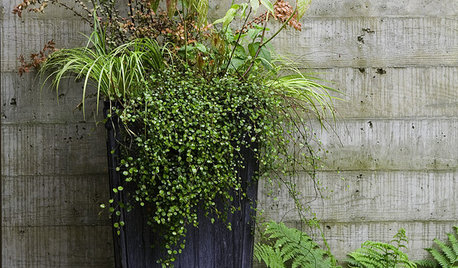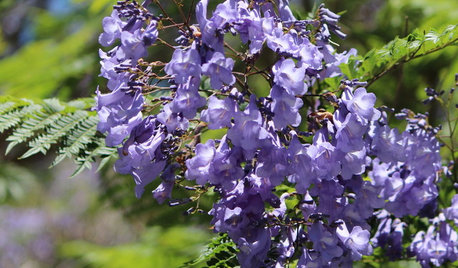Tomato wilt....WHY?????
everythingirl1
15 years ago
Related Stories

EDIBLE GARDENSSummer Crops: How to Grow Tomatoes
Plant tomato seedlings in spring for one of the best tastes of summer, fresh from your backyard
Full Story
LIFEKitchen Traditions: Tomato Season Meets a Family Legacy
Somewhere a Sicilian great-great-grandmother is smiling at a bowl of American-made sauce
Full Story
GARDENING GUIDESCalifornia Gardener's June Checklist
Update your hydrangeas, catch up on tomatoes and more ways to enjoy your California garden in June
Full Story
SPRING GARDENINGSummer Crops: How to Grow Strawberries
Pluck your own sweet strawberries right from the garden vine for smoothies, salads or eating then and there
Full Story
GARDENING GUIDESThe Secret Formula for Grouping Plants in a Pot
Designing a gorgeous container garden is easy once you know this simple rule of thumb for composition
Full Story
CALIFORNIA GARDENINGCalifornia Gardener's July Checklist
Bite into tree-fresh apricots, inhale delightful garden perfumes and continue planting vegetables for a late-summer harvest
Full Story
EDIBLE GARDENSGarden BFFs? Why Your Vegetables Are Begging for Companion Plants
Foster friendships among plants for protection from pests, pollination support and color camaraderie
Full Story
GARDENING GUIDESEssential Watering Tips for Your Edible Garden
To give your edible plants just what they need, check out these guidelines for how, when and how much to water
Full Story
EDIBLE GARDENSHow to Grow Your Own Sweet Summer Crops
This guide will help any gardener get started on growing the freshest warm-season veggies and berries for summer
Full Story
GARDENING GUIDES10 Easy Edibles for First-Time Gardeners
Focus on these beginner-friendly vegetables, herbs, beans and salad greens to start a home farm with little fuss
Full StoryMore Discussions






structure
duajones
Related Professionals
Lakewood Landscape Architects & Landscape Designers · Hampton Bays Landscape Contractors · Mastic Beach Landscape Contractors · Milford Landscape Contractors · Weslaco Landscape Contractors · West Orange Landscape Contractors · Fargo General Contractors · Fredonia General Contractors · Klahanie General Contractors · Markham General Contractors · Millville General Contractors · Orangevale General Contractors · Avenal General Contractors · Hull Decks, Patios & Outdoor Enclosures · Pittsburgh Decks, Patios & Outdoor Enclosurescarolyn137
everythingirl1Original Author
anney
containerted
tomatobreeder
lazyhat
carolyn137
or_heirlooms
containerted
carolyn137
or_heirlooms
everythingirl1Original Author
or_heirlooms
gringojay
nandina
trudi_d
everythingirl1Original Author
nandina
chalstonsc
gardener_sandy
chalstonsc
everythingirl1Original Author
greenhouser2
tn_veggie_gardner
barkeater